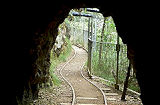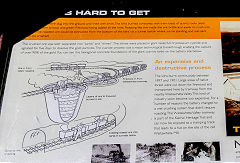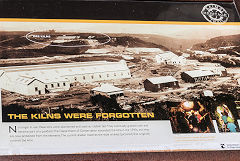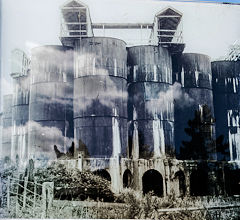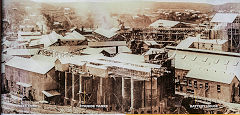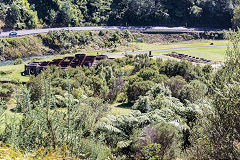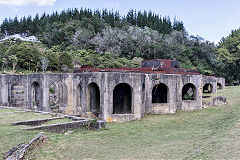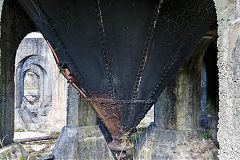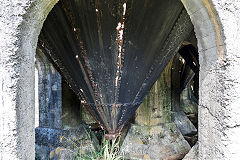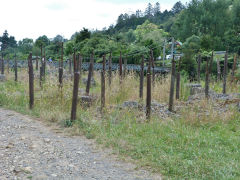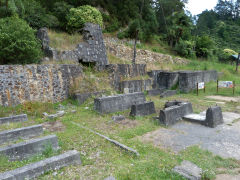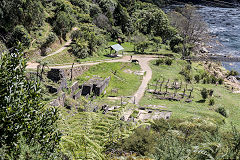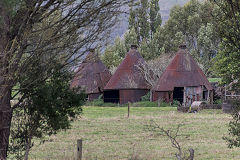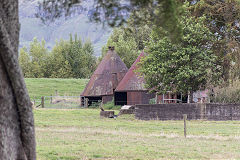The Transport and Industries of New Zealand
Click on the button to go to :-
Click on the thumbnail to enlarge a photo or map and read more about it.
Then click 'Full Size' on the toolbar to see it in all its glory.
The Karangahake Gorge
from Waihi to Paeroa
The Ohinemuri River runs from Waihi, just 2 kms from the Bay of Plenty but strangely flows westward to the Firth of Thames, passing through the Karangahake Gorge on the way. The river valley marks one of the most prolific goldfields in New Zealand.
The Cyanide Process
The first field trials in the world were carried out at the Crown mine to prove the cyanide method of extracting gold from low quality quartz ores. In 1897 the New Zealand Government acquired the patent rights for the process. The small royalty charged for the use of the process meant that the government outlay was fully recovered by 1905. The process was soon employed widely on this and other goldfields throughout New Zealand and overseas. It achieved an extraction rate of up to 90% of the gold contained in the rock, so making economic the processing of low content ores.
Waihi and Waikino
Waihi
Waihi is the home of the Martha Mine, one of the largest goldmines in New Zealand.
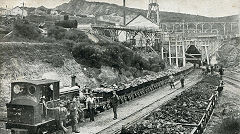
Waihi Goldmine
|
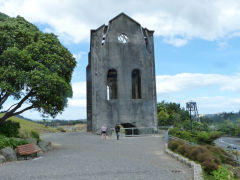
Cornish pumphouse, Waihi
|
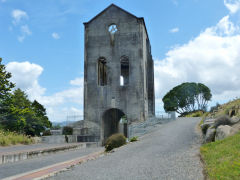
Cornish pumphouse, Waihi
|
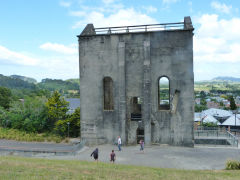
Cornish pumphouse, Waihi
|
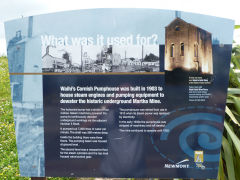
Cornish pumphouse, Waihi
|
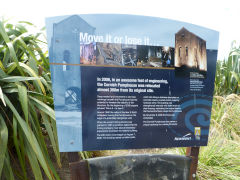
Cornish pumphouse noticeboard
|
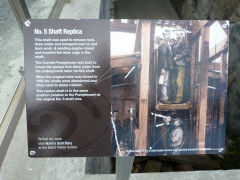
Pumphouse shaft noticeboard
|
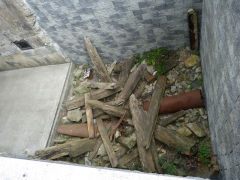
Cornish pumphouse shaft, Waihi
|
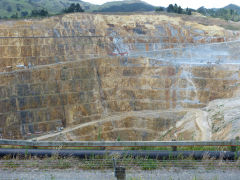
The Martha goldmine, Waihi
|
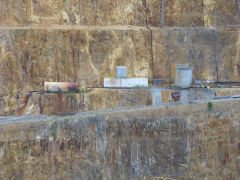
The Martha goldmine, Waihi
|
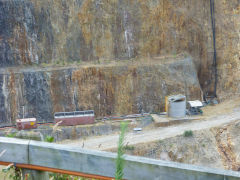
The Martha goldmine, Waihi
|
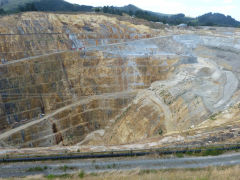
The Martha goldmine, Waihi
|
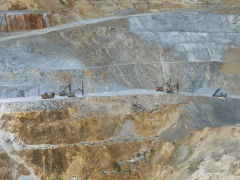
The Martha goldmine, Waihi
|
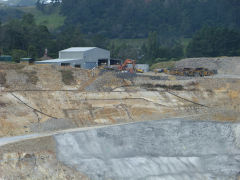
The Martha goldmine, Waihi
|
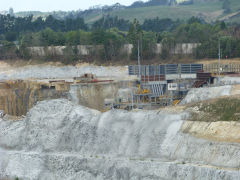
The Martha goldmine, Waihi
|

The Martha goldmine, Waihi
|
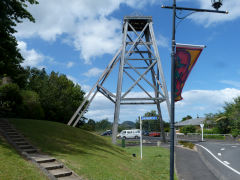
Replica poppet headgear, Waihi
|
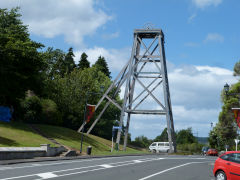
Replica poppet headgear, Waihi
|
|
|
Waikino
Waikino Goldfields Railway
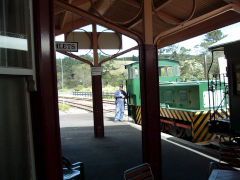
Baguley-Drewry 3650 of 1968
|
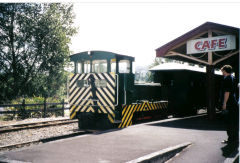
Baguley-Drewry 3650 of 1968
|
|
|
Woodstock Battery and kilns
Woodstock Battery
The Auckland based 'Woodstock Gold and Silver Mining and Smelting Co' was formed in 1885, headed by William Gorrie. Roderick McDonald Scott was mine manager.. It met with little success because of the difficult, refractory nature of the ore despite its high grade. In 1890, the company was reconstructed as the 'Woodstock United Goldmining Co' after merging with the 'Kenilworth Co'. It wasn’t until the introduction of the ‘cyanide’ process in 1894 (developed by the nearby Crown Gold Mining Co in 1889), which greatly improved returns, that the mine developed. In 1897 the 10 stamp battery was increased to 40 stamps and a cyanide plant erected at the confluence of the Ohinemuri and Waitawheta Rivers. Around 1900 the company constructed a large underground pumphouse chamber on the west bank of the river to accommodate a headframe and shaft within the narrow confines of the gorge becoming the centre of the company’s operations. It had developed the mine at five levels, producing around 140 000 ounces of gold, before closing in 1903. The Woodstock Co was acquired by the Talisman Co in 1904, who accessed part of its Talisman level 14 workings through the Woodstock shaft, and operations at the battery ceased in 1909 after a flood, and then a fire the following year. The Talisman Co was liquidated in 1920. (DoC)
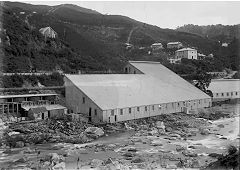
Woodstock Battery
|
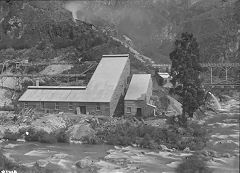
Woodstock Battery c1885
|
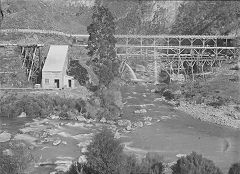
Woodstock Battery
|
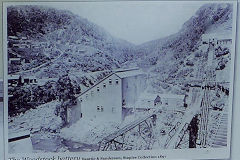
Woodstock Battery,1897
|

Woodstock Battery, c1895
|

Woodstock Battery, c1914
|
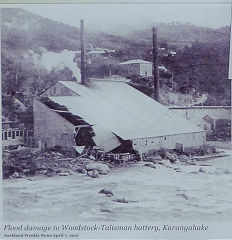
Woodstock Battery flood damage
|
|

Woodstock Battery on fire, 1910
|
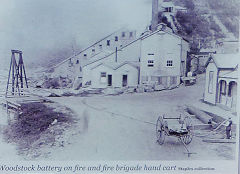
Woodstock Battery on fire, 1910
|

Woodstock ore kilns
|
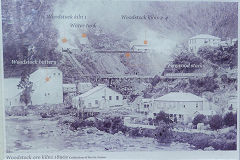
Woodstock ore kilns, c1890
|
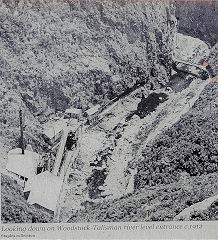
Woodstock pumphouse
|

Woodstock pumphouse
|
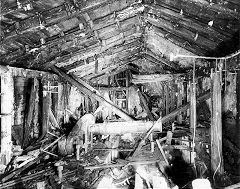
Woodstock pumpshaft
|
|
Woodstock Battery
Woodstock Battery
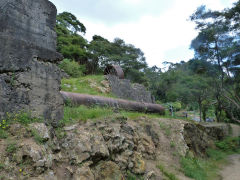
Woodstock Battery
|
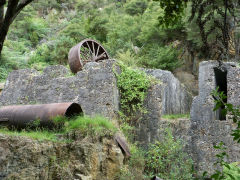
Woodstock Battery
|
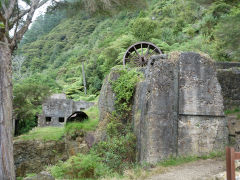
Woodstock Battery
|
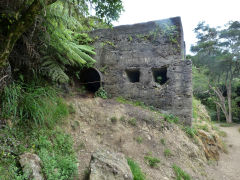
Woodstock Battery
|
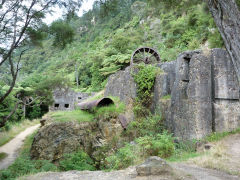
Woodstock Battery
|
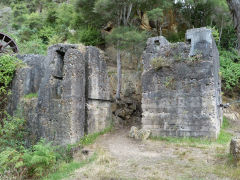
Woodstock Battery
|
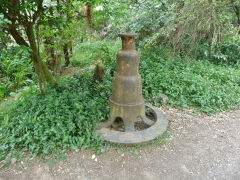
Ironmongery in the undergrowth
|
|
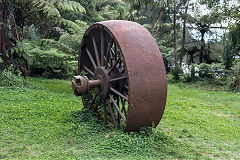
Woodstock Battery
|
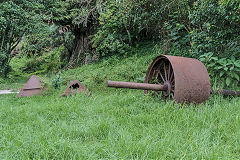
Woodstock Battery
|
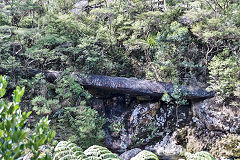
Woodstock riverside pipeline
|
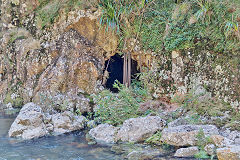
Woodstock drainage level
|
Woodstock Ore Kilns and Incline
The Woodstock ore kilns were above the battery and were fed with ore brought along the tramway from the Windows mine . The incline linked the ore kilns and mine to the battery and is now the main access to the Windows mine.
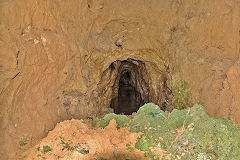
Woodstock ore kilns level
|
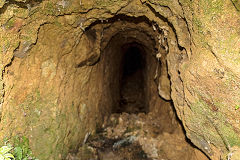
Woodstock ore kilns level
|

Woodstock ore kilns level
|
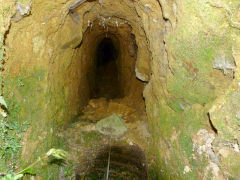
Woodstock ore kilns level
|
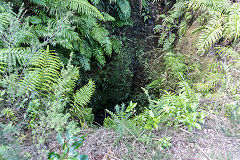
Woodstock Battery ore kilns
|

Woodstock ore kilns level
|
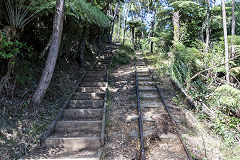
Woodstock Battery incline
|
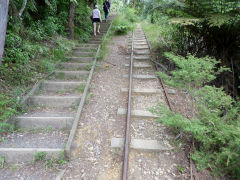
Woodstock Battery incline
|
Woodstock Underground Pumphouse
Woodstock underground pumphouse

Woodstock pumphouse tramway
|
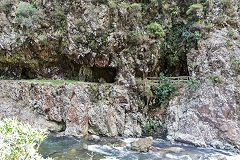
Woodstock pumphouse tramway
|
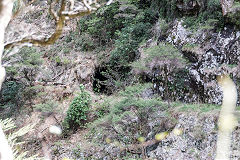
Woodstock pumphouse tramway
|
|
The Woodstock 'Windows' Walk
The Woodstock 'Windows' Walk
The Woodstock ‘windows’ tunnels are on the North side of the gorge about 35 metres above the river. They follow Shepherd’s Lode, the location where most of the rich ore was won. The tunnels are connected by a 500 metre tramway (Woodstock tramway) to the company’s battery site at the confluence of the Ohinemuri and Waitawheta Rivers. The main tunnel, cut through sound rock, is about 100 metres long, 2.5 metres wide, and 2.5 metres high (for horse drawn operations), and is 5 to 10 metres inside the cliff face. Crosscuts run off it at right angles into the hillside. Where the crosscuts and tunnel intersect, the miners created ‘windows’ in the cliff face to dump mullock (waste rock) into the river, while the gold bearing ore was retained and trucked along the tramway to the battery.
The tunnels and ‘windows’ in their spectacular gorge setting were a major engineering achievement and have created a significant and enduring heritage site. Waikato Conservancy has just completed the first stage of a major development (the Karangahake Mines project) of the sites in this area. This work has seen the historic tunnel which runs parallel to the cliff face, extended by 70 metres and in tandem with a new staircase created a circuit walk around the significant mining heritage sites in the lower gorge. In addition track was re-laid on the Woodstock tramway to both remove the tunnellings and recreate an historic element. New tunnel portals and safety barriers have also been installed in key locations. (DoC).
The Woodstock 'Windows' Tramway
The Woodstock tramway ran from the ore kilns to the mine, known these days as the 'Windows' tunnels.
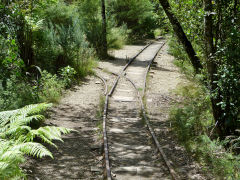
The Woodstock 'Windows' tramway
|
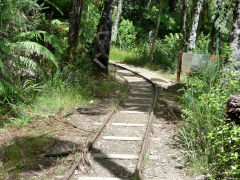
The Woodstock 'Windows' tramway
|
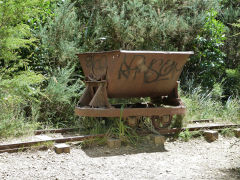
The Woodstock tramway wagon
|
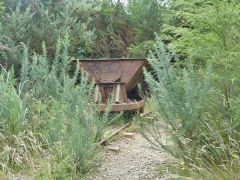
The Woodstock tramway wagon
|
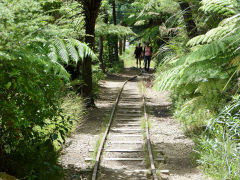
The Woodstock 'Windows' tramway
|
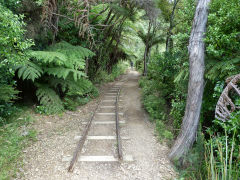
The Woodstock 'Windows' tramway
|
|
|
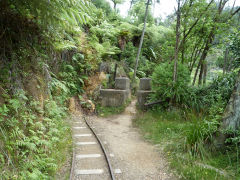
The Woodstock 'Windows' tramway
|
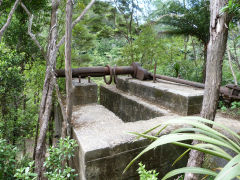
The Woodstock 'Windows' tramway
|

The Woodstock 'Windows' tramway
|

The Woodstock 'Windows' tramway
|
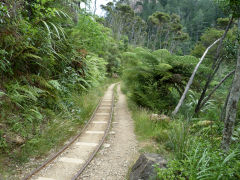
The Woodstock 'Windows' tramway
|
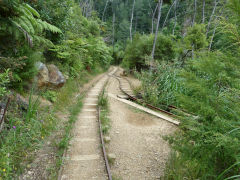
The Woodstock tramway, 2013
|
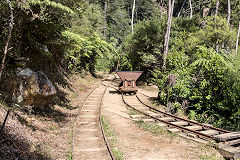
The Woodstock tramway, 2017
|
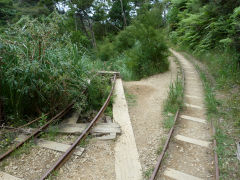
The Woodstock 'Windows' tramway
|
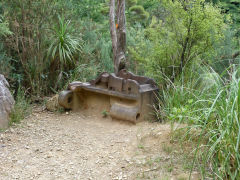
The 'Windows' tunnels ironmongery
|
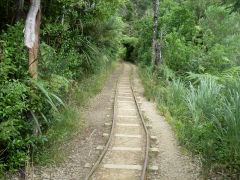
The Woodstock 'Windows' tramway
|
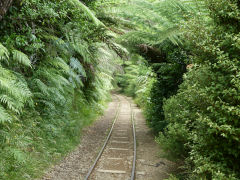
The Woodstock 'Windows' tramway
|
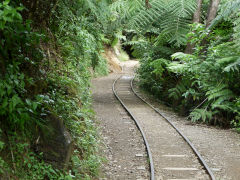
The Woodstock 'Windows' tramway
|
The 'Windows' tunnels
The 'Windows' tunnels
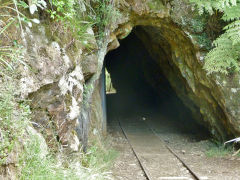
The first 'Windows' tunnel
|
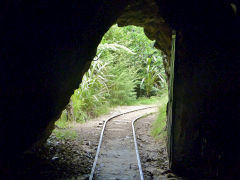
The first 'Windows' tunnel
|
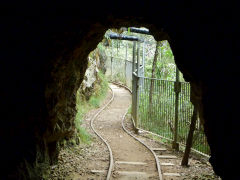
The first 'Windows' tunnel
|
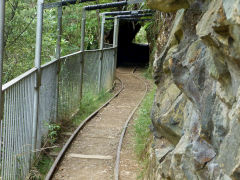
The first 'Windows' tunnel
|
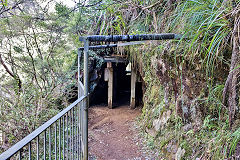
The first 'Windows' tunnel
|
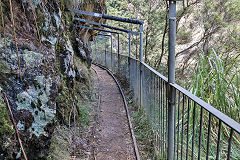
Between the 1st and 2nd tunnels
|
|
|
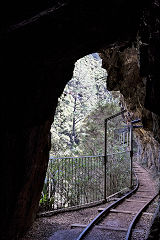
The second 'Windows' tunnel
|
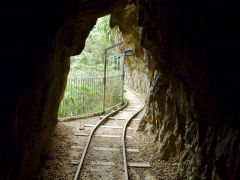
The second 'Windows' tunnel
|
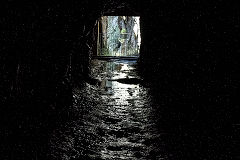
The second 'Windows' tunnel
|

The second 'Windows' tunnel
|

The second 'Windows' tunnel
|
|
|
|
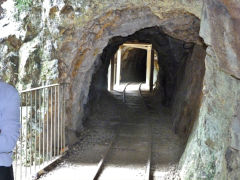
The third 'Windows' tunnel
|
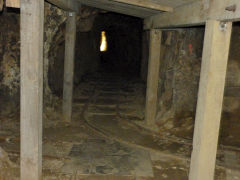
The third 'Windows' tunnel
|
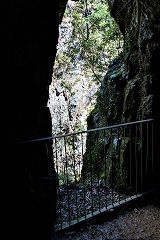
The third 'Windows' tunnel
|
|

The third 'Windows' tunnel
|
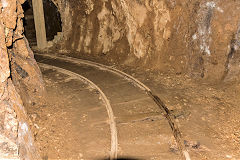
The third 'Windows' tunnel
|
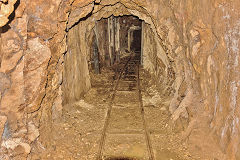
The third 'Windows' tunnel
|
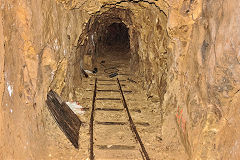
The third 'Windows' tunnel
|

The third 'Windows' tunnel
|
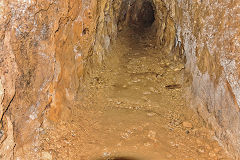
The third 'Windows' tunnel
|
|
|
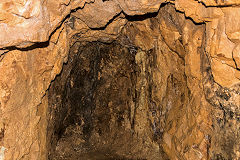
The third 'Windows' tunnel
|
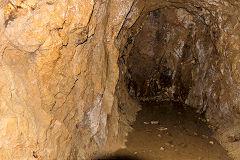
The third 'Windows' tunnel
|
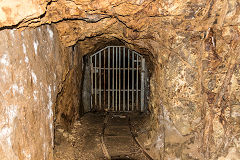
The third 'Windows' tunnel
|
|
The Windows from the Crown Mine tramway
The Windows viewed from the Crown Mine tramway on the South bank of the Waitawhera River

Windows Walk
|
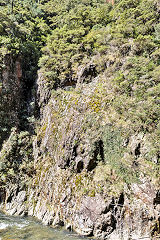
Windows Walk
|
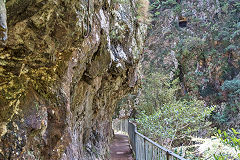
Windows Walk
|
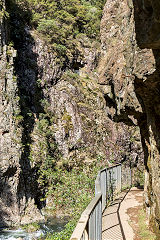
Windows Walk
|
Crown Mine
Crown Mine
Crown Mine and Battery.
The 'Crown Goldmining Co' which first worked this site was registered in 1883, but operations at the beginning were difficult due to the refractory nature of the ore. They erected an inclined tramway from the mine to the battery to transport ore. In 1891, they commenced mining of the Welcome Reef, driving an adit 2894 feet. In 1896 a shaft was sunk from a chamber within this level for 526 feet, and developed five levels from it. Mining concentrated on the upper most level called 5A with the lowest level was still 500 feet above the river level. The lower levels suffered flooding problems. The company gradually took over neighbouring claims, increasing from an initial 60 acres to 404 acres. These leases included the Earl of Glasgow, Monastery, Mammoth, and Ravenswood. By 1891 it was owned by the 'New Zealand Crown Mines Co'. The introduction of the cyanide process in the 1890's improved extraction rates and by 1896 the plant had expanded to 60 stampers. By 1908 difficulties, particularly surplus water, were encountered in the mining operation and profitability declined from 1910 to 1915 and by 1916 most of the workers had been laid off. In 1920 the battery was dismantled and very small scale mining continued until 1928, when the company abandoned the lease and was wound-up.

Crown battery
|
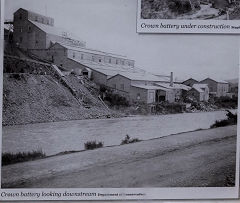
Crown battery downstream
|
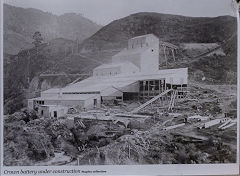
Battery under construction
|
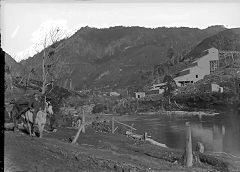
Crown battery
|
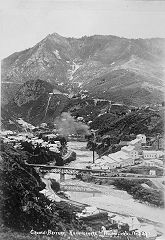
Crown battery
|
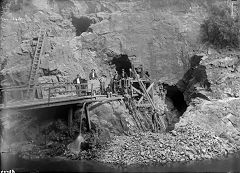
Crown Mine tunnel
|
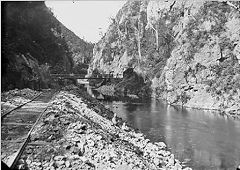
Crown Mine
|

No 6 Level entrance
|
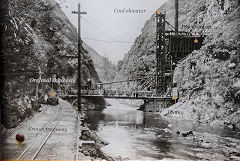
No 6 Level entrance
|
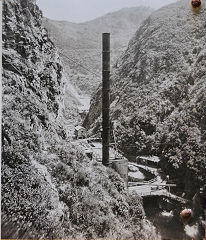
Powerplant and tramway
|
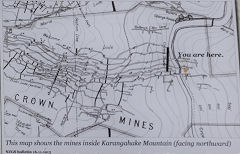
Crown Mine
|
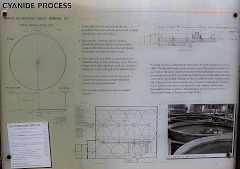
The Cyanide process
|
The Crown Battery
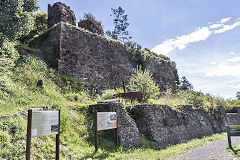
Crown battery
|

Crown battery
|

Crown battery
|
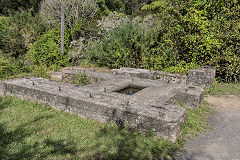
Crown battery
|
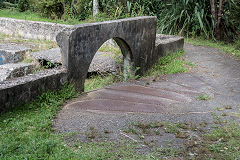
Crown battery
|
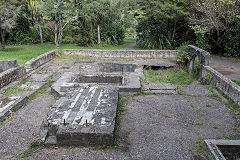
Crown battery
|
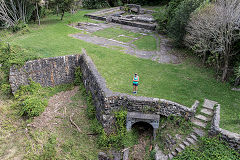
Crown battery
|
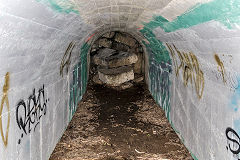
Crown battery
|
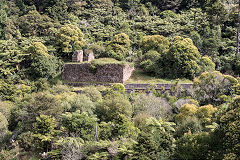
Crown battery
|

Crown battery
|

Crown battery
|

Crown battery pipeline
|
The Crown Mine
Upstream from the suspension bridge on the North bank
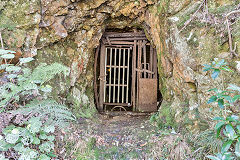
Crown Mine level
|
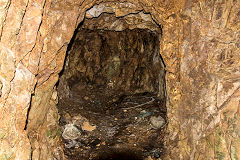
Crown Mine level
|
|
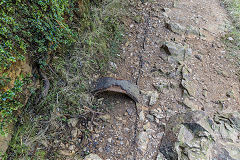
Crown Mine pipeline
|
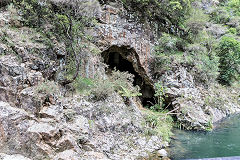
Drainage level
|
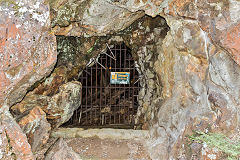
Crown Mine level
|

Crown Mine level
|

Crown Mine level
|
Downstream from the suspension bridge on the South bank
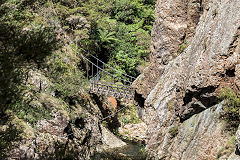
Crown Mine bridge
|
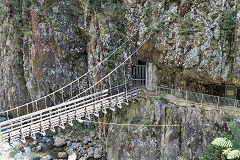
Crown Mine bridge
|
|
|
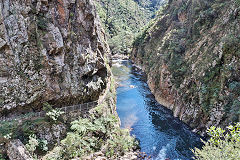
Crown Mine tramway
|

Crown Mine tramway
|

Crown Mine tramway
|
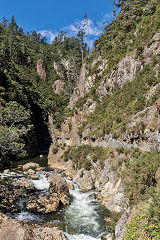
Crown Mine tramway
|
Drainage levels on the Crown Mine tramway on the South bank, possibly from the Talisman Mine
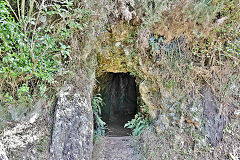
Drainage levels on the tramway
|
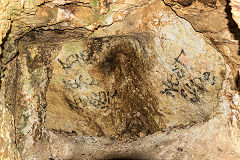
Drainage levels on the tramway
|
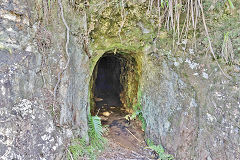
Drainage levels on the tramway
|
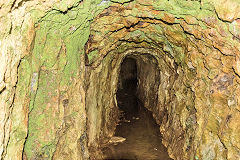
Drainage levels on the tramway
|
Acknowledgments, sources and further reading.
Thanks for photos, info and help to :- Auckland Museum, Dept of Conservaton (DoC), Goldfields Railway Inc., Heritage New Zealand, Mindat.org, Ohinemuri.org.nz, Victoria Battery Tramway & Museum Society Inc.
A Guide to the Website
Industrial Wales
Collieries, Ironworks, Quarries, Railways, Canals, Tramroads, Tunnels, Culverts and so much more....
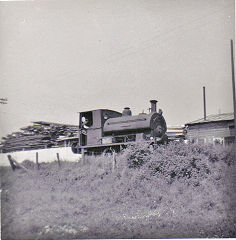
|
Brickworks of Wales
Bricks are 'History with a label' so here's the story of the Brickworks of Wales - photos, maps and the products themselves
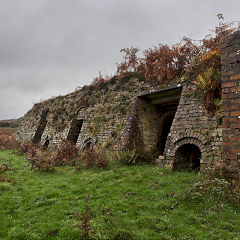
|
Around the World
My travels around the UK and the Whole Wide World in search of industries, railways, trams and mines to name a few.
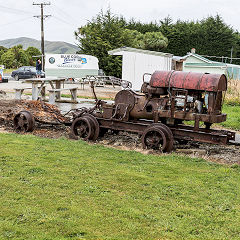
|
Boundary Stones and Mileposts
Boundary Stones, Mileposts and other markers in simple alphabetical order of their initials, name or site.

|
Ships and Shipping
Ships around the World in simple alphabetical order of their name (or apparent area if I can't read the name).

|
The Site Map and Index
A full list of all the pages of the whole website in just one place, so you should find exactly what you are looking for.

|
About the Site
The background and technical details about the site, plus a contact page and links to other sites - and a warning !!
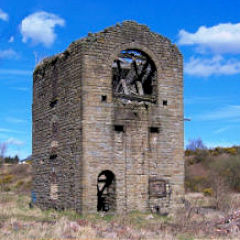
|
Contact Me
Something to add? A great photo? Something wrong? or need to know more about things? Just drop me a line here.

|
Further Reading
You can find lots of local and other very helpful websites, books, magazines and Facebook groups all listed here.
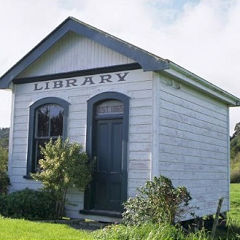
|
All rights reserved - Phil Jenkins
